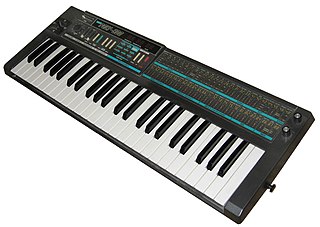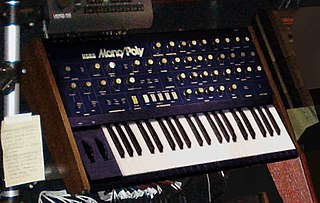| Casio SD Synth Features | HZ-600 | MT-600 | CT-630 | HT-700 | HT-3000 | HT-6000 |
|---|
| Keys | 61 Full | 49 Mini | 61 Full | 49 Mini | 61 Full | 61 Full |
| Built-in Speakers | No | Yes (1W+1W) | Yes (2W+2W) | Yes (1W+1W) | Yes (2W+2W) | Yes (2W+2W) |
| Velocity (Initial Touch) Sensitive | No | No | No | No | No | Yes |
| Polyphony | 8 | 8 | 8 | 8 | 8 | 8 |
| Multi-timbral MIDI Channels | 2 | 3 | 3 | 3 | 3 | 4 |
| Programmable SD Synthesis | Yes | No | No | Yes | Yes | Yes, Expanded |
| Headphones Jack | Front, 1/4" | Rear, 1/8" | Front, 1/4" | Rear, 1/8" | Front, 1/4" | Front, 1/4" |
| Volume Pedal/Sustain Jacks | Yes, 1/4" Stereo | No | Yes, 1/4" Stereo | Sustain only, 1/4" | Yes, 1/4" Stereo | Yes, 1/4" Stereo |
| Line-out Jacks | L & R 1/4" | None | L & R 1/4" | L & R RCA | L & R 1/4" | L & R 1/4" |
| MIDI Jacks | In, Out, Thru | In, Out | In, Out, Thru | In, Out | In, Out, Thru | In, Out, Thru |
| Transpose | -5 to +6 | No | No | -5 to +6 | -5 to +6 | -5 to +6 |
| Chorus | Analog, 3 levels | Analog, no levels | Analog, no levels | Analog, 3 levels | Analog, 3 levels | Analog, 3 levels |
| RAM Card Patch Capacity (Upper/Lower) | 120 / 60 | None | None | 20 / 10 | 20 / 10 | 20 / 10 |
| Accompaniment Sequencer Memory (Banks x Chords/Operations) | None | 1x 1304/395 | 2x 640/198 | 2x 640/198 | 2x 640/198 | 2x 427/198 |
| Pitch Bender Range | Selectable (Major 2nd, Minor 3rd, Perfect 5th) | Fixed @ Major 2nd | None | Fixed @ Major 2nd | Fixed @ Major 2nd | Fixed @ Major 2nd |
| Modulation Wheel | Yes | No | No | No | Yes | Yes |
| Programming Wheels | 1 | None | None | 1 | 1 | 2 |
| Auto-shutoff override | Yes | No | No | No | No | Yes |
| Keyboard Split | 3 split points | None | 3 split points | 2 (only for auto-accompaniment) | 3 split points | 3 split points |
| Preset Patches | Piano, Harpsichord, Jazz Organ, Brass Ens, Symph Ens, Synth Bells, Magical Wind, Blues Harmonica, Light Harp, Plunk Extend, Elec Piano, Vibraphone, Synth Clavi, Strings, Synth Bass, Synth Celesta, Pearl Drop, Synth Reed, Fantasy, Typhoon Sound. | Piano 1, Elec Piano 1, Harpsichord, Vibraphone 1, Marimba, Brass Ens, Strings 1, Jazz Organ, Blues Harmonica, Violin, Synth Ens 1, Light Harp, Synth Vib 1, Synth Celesta, Synth Bass, Synth Reed, Pearl Drop, Magical Wind, Fantasy, Typhoon Sound. | Same as MT-600 | Same as HZ-600 | Same as HZ-600 | Synth Ens 1, Cosmic Dance, String Ens, Brass Ens, Pipe Organ, Piano, Harpsichord, Guitar, Trumpet, Vibraphone, Synth Ens 2, Cathedral, Symphonic Ens, Synth Brass, Jazz Organ, Elec Piano, Harp, Funky Clavi, Flute, Synth Bells |
| "Internal" Patch Defaults (Rewritable except on the MT-600 and CT-630) | Piano 2, Marimba, Pipe Organ, Strings 2, Synth Ens 1, Synth Vib 1, Koto, Double Reed, Clarinet, Miracle, Elec Piano, Vibraphone 2, Violin, Synth Strings, Synth Ens 2, Synth Vib 2, Synth Harp, Slash Reed, Synth Guitar, Explosion | Piano 2, Elec Piano 2, Funky Clavi, Vibraphone 2, Koto, Symphonic Ens, Strings 2, Pipe Organ, Clarinet, Double Reed, Synth Ens 2, Synth Strings, Synth Vib 2, Synth Bells, Synth Guitar, Slash Reed, Synth Harp, Miracle, Plunk Extend, Explosion. | Same as MT-600 | Same as HZ-600 | Same as HZ-600 | Synth Ens, Space Fantasy, Chorus, Synth Harp 1, Pipe Organ 2, Piano 2, Harpsichord 2, Harmonica, Synth Reed, Steel Drum, Brass Ens 2, Metallic Sound, Synth Sound, Fantasy, Jazz Organ 2, Synth Celesta, Synth Harp 2, Clarinet, Synth Guitar, Marimba |
| Auto accompaniment patterns | None | 20 presets, non-programmable | 20 presets, non-programmable | 20 presets, 10 internal, +10 card | 20 presets, 10 internal, +10 card | 20 presets, 10 internal, +10 card |
| Volume Sliders | Master, Lower Tone | Master, Accompaniment | Master, Accompaniment, Drums | Master, Accompaniment, Drums | Master, Accompaniment/Lower Tone, Drums | Master, Accompaniment/Lower Tone, Drums |
| Accompaniment Parts | 0 (No accompaniment) | 2 (Chord, Bass) | 2 (Chord, Bass) | 2 (Chord, Bass) | 2 (Chord, Bass) | 3 (Chord, Bass, Obligatto) |
| Accompaniment Bass Patches | 0 (No accompaniment) | 1 | 1 | 1 | 1 | 4 (Wood, Elec, Slap, Synth) |
| Accompaniment Obligatto Patches | 0 (No accompaniment) | 0 | 0 | 0 | 0 | 6 |
| Programmable PCM Percussion Sounds | 0 (No accompaniment) | No programmable percussion. Preset rhythms use 8 of the HT-700/3000 drums. (bass, snare, rim-shot, elec. toms (hi, low), hi-hat (open, closed), and ride.) Has "Funk" and "Shuffle" presets instead of "Pops 2" and "Electronic Pop" | No programmable percussion. Preset rhythms use the 15 HT-700/3000 drums. | 15 (bass, snare, rim-shot, elec. toms (hi, low), ride, claps, hi-hat (open, closed), bongos (hi, low), timbales (hi, low), agogos (hi, low), claps) | Same as HT-700 | 18 (same as HT-700/3000 but adds gated snare, timpani, orchestra hit, cowbell, and drops the claps.) |
| Chord Inversions available for Custom Accompaniment | 0 (No accompaniment) | 0 (Not programmable) | 0 (Not programmable) | 8 | 8 | 14 |
| Rhythm Intro | No (No accompaniment) | No | No | No | No | Yes |
| Rhythm Ending | No (No accompaniment) | No | Yes | No | Yes | Yes |
| Rhythm Variation | No (No accompaniment) | No | No | No | No | Yes |
| Accompaniment Variation | No (No accompaniment) | No | No | No | No | Yes |
| Auto-Harmonize | No (No accompaniment) | No | Yes | No | Yes | Yes |
| DCO Oscillators/Voice | 1 | 1 | 1 | 1 | 1 | 4 for upper tones, 2 for lower tones |
| Available DCO Waveforms | 32 (Some including noise oscillation) | DCO-based presets uneditable. | DCO-based presets uneditable. | Same as HZ-600 | Same as HZ-600 | 64 (32 basic, 16 including noise oscillation and 16 including ring modulation) |
| Programmable LFO Settings | Pitch only. Delay, speed, depth, wave (saw up/down, triangle, square, random) | None | None | Same as HZ-600 | Same as HZ-600 | Same as HZ-600 |
| Programmable VCF Settings | ADSR w/ cutoff frequency, resonance, depth | None | None | Same as HZ-600 | Same as HZ-600 | ADSR w/ cutoff frequency, resonance, depth, key-follow, velocity curve |
| Number of VCF's | 1 shared/channel | 1 shared/channel | 1 shared/channel | 1 shared/channel | 1 shared/channel | 8 independent (1/voice of polyphony) |
| Programmable DCA Settings | ADSR, depth | None | None | Same as HZ-600 | Same as HZ-600 | ADSR, attack and decay curves (acute or obtuse), key-follow, plus velocity curves and depths for each of 4 oscillators |
| Independent DCA for Noise Oscillator | No | No | No | No | No | Yes (ADSR) |
| Detuning | No | No | No | No | No | Yes, higher than fundamental, fine or coarse (but not both together for a given oscillator) |
| Ring Modulation | No | No | No | No | No | Yes, oscillator 4 can modulate oscillator 3. |
| "Line Editor" Programming | No | No | No | No | No | Yes: simultaneous side-by-side view of all 4 oscillators' velocity, amplitude or detune, with 4 pairs of increment/decrement buttons. |

















